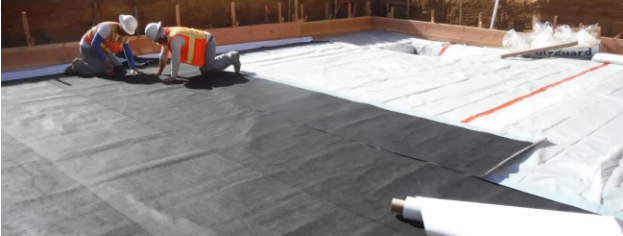When working on any concrete flooring project—whether in commercial, industrial, or residential spaces—one essential step often gets overlooked: installing a moisture barrier for concrete floor. This step is especially critical before applying surface finishes like wood, tile, or epoxy resin coatings. Skipping it can lead to serious moisture-related problems down the line, including blistering, peeling, or microbial growth.
Concrete naturally retains moisture, even long after it appears dry. When this moisture migrates upward, it can compromise adhesives, delaminate flooring, and reduce the longevity of your floor system. That’s where a proper moisture barrier plays its role—creating a protective layer that stops water vapor from seeping into finish materials.
Why Concrete Floors Need a Moisture Barrier
Concrete slabs may appear solid, but they’re inherently porous. Ground moisture and humidity levels can rise through the slab over time, especially in below-grade applications or in humid environments. If you apply surface materials like hardwood or vinyl without protection, you risk:
- Mold and mildew formation beneath the floor
- Warping and buckling of wooden planks
- Adhesive failure in vinyl or carpet systems
- Surface coating delamination (e.g., epoxy flooring)
Using a moisture barrier for concrete floor reduces or eliminates these risks, preserving both aesthetic quality and structural integrity.
Types of Moisture Barriers
Depending on the project’s needs and the final floor finish, moisture barriers come in several forms:
1. Sheet Membranes
Typically made from polyethylene or similar plastic films, these are laid directly over the concrete before flooring installation.
2. Liquid-Applied Barriers
These are rolled or sprayed onto the concrete. Once cured, they form a waterproof membrane across the surface.
3. Epoxy-Based Barriers
Two-part epoxies designed specifically as vapor retarders offer dual benefits—moisture control and strong bonding surfaces for future finishes.
Liquid-applied solutions are often preferred for commercial applications where a seamless layer is needed. They also pair well with subsequent casting epoxy resin or colorants, creating a compatible system that ensures adhesion and finish durability.
When and Where to Use Moisture Barriers
- Basements or ground-level slabs with high humidity levels
- Commercial kitchens or locker rooms where water exposure is routine
- Warehouses or garages transitioning to decorative or coated finishes
- Before applying epoxy floor coatings to prevent vapor pressure failure
For instance, if you’re planning to apply casting epoxy resin as part of a colored or decorative finish, moisture rising from the slab can cause bubbling, pinholes, or uneven curing. That’s why moisture testing and barrier installation must precede such applications.
Installation Best Practices
Installing a moisture barrier for concrete floor isn’t just about choosing the right product—it’s about proper preparation and execution:
- Test moisture content using ASTM F2170 or F1869 methods.
- Ensure slab is clean, dry, and free of dust, oils, or contaminants.
- Select compatible products for the barrier and finish layers.
- Apply in optimal conditions (temperature and humidity as recommended).
- Allow full curing time before installing overlays or coatings.
If you’re moving forward with an epoxy-based flooring system, it’s wise to choose barrier products that chemically bond with colorants, enhancing the adhesion and overall performance.
The Cost of Ignoring Moisture Protection
Not installing a moisture barrier may save you a few hours and some initial costs—but it often leads to expensive repair or replacement later. Blistering, microbial growth, and total finish failure can happen months after installation, particularly in challenging climates or improperly ventilated spaces.
Contractors, architects, and property owners are now prioritizing moisture protection as a standard in concrete flooring systems. It’s a small step that ensures the long-term reliability of the entire surface finish.
Final Thought
Whether you’re working on a warehouse renovation or planning decorative epoxy overlays in a commercial space, a moisture barrier for concrete floor should be non-negotiable. This step not only protects your investment but also ensures the flawless application of advanced finishes like casting epoxy resin and epoxy colorants.
When building flooring systems that last, always start with a solid, dry, and well-sealed foundation.





